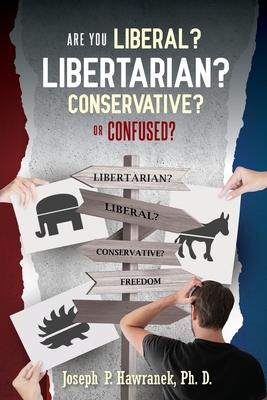This book clarifies one's thinking by defining generally accepted definitions for liberal, libertarian, and conservative. This establishes a linear scale. In order to do so, the author went to experts in each area and used their definitions. He found that some definitions have changed with time. Specifically, a Liberal in the 18th century is what we would call a Libertarian in the 20th and 21st century. The socialist of the 19th century is what is called liberal at the end of the 20th and in the 21st century. The general scaling of these political positions are clearly defined and plotted so that the reader can find themselves on a linear spectrum scale based on the reader's beliefs. Thus, liberals are on the left, which follow social freedom, but economic constraint. On the right, one has conservatives, which follow social constraints and economic freedom. In the center, one has Libertarians that allow both social freedom and economic freedom. On the extremes, we find communism on the left and Fascism on the right. This becomes clear when one defines what is meant by each term and plots them from left to right. An extension of this scaling allows one to see where Democrats and Republicans fit as well as the New World Order and capitalists. Capitalists are libertarians as were the founders of this nation. The New World order is a combination of Fascism and Communism with the state being controlled by corporations and the people being controlled by Communism. It is also shown but the scaling had to become a circle to make the extreme ends meet. This is easy to visualize by taking the linear scale and making a circle with the two ends meeting with Fascism and Communism at the juncture.
Since the state is in control, politicians will do anything or say anything to stay in control. Centralism and the state pervade and control society and the state replaces God as the extreme authority.
In order to find where you fit, a short series of questions are given in Appendix A. There is no right answer to any questions. The questions when answered honestly will place you on a scale with both liberal beliefs and conservative beliefs. Then you can find how Liberal, Conservative or Libertarian you are. The author recommends that that you take the test before you read the book and again after you read the book.

Are You Liberal, Libertarian, Conservative or Confused?
This book clarifies one's thinking by defining generally accepted definitions for liberal, libertarian, and conservative. This establishes a linear scale. In order to do so, the author went to experts in each area and used their definitions. He found that some definitions have changed with time. Specifically, a Liberal in the 18th century is what we would call a Libertarian in the 20th and 21st century. The socialist of the 19th century is what is called liberal at the end of the 20th and in the 21st century. The general scaling of these political positions are clearly defined and plotted so that the reader can find themselves on a linear spectrum scale based on the reader's beliefs. Thus, liberals are on the left, which follow social freedom, but economic constraint. On the right, one has conservatives, which follow social constraints and economic freedom. In the center, one has Libertarians that allow both social freedom and economic freedom. On the extremes, we find communism on the left and Fascism on the right. This becomes clear when one defines what is meant by each term and plots them from left to right. An extension of this scaling allows one to see where Democrats and Republicans fit as well as the New World Order and capitalists. Capitalists are libertarians as were the founders of this nation. The New World order is a combination of Fascism and Communism with the state being controlled by corporations and the people being controlled by Communism. It is also shown but the scaling had to become a circle to make the extreme ends meet. This is easy to visualize by taking the linear scale and making a circle with the two ends meeting with Fascism and Communism at the juncture.
Since the state is in control, politicians will do anything or say anything to stay in control. Centralism and the state pervade and control society and the state replaces God as the extreme authority.
In order to find where you fit, a short series of questions are given in Appendix A. There is no right answer to any questions. The questions when answered honestly will place you on a scale with both liberal beliefs and conservative beliefs. Then you can find how Liberal, Conservative or Libertarian you are. The author recommends that that you take the test before you read the book and again after you read the book.